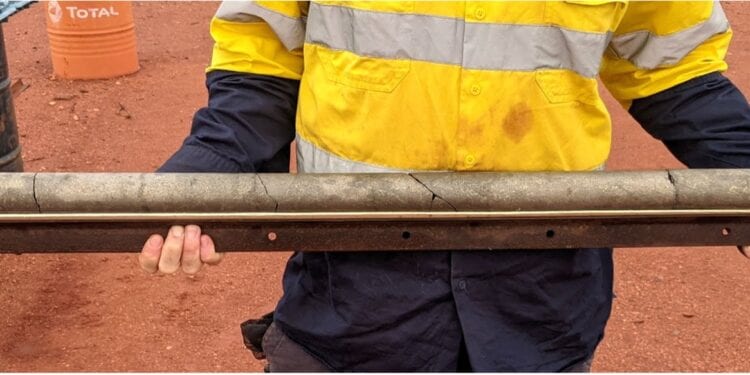Stock Price Up More Than 33% On Nickel-Copper Sulphides Find
The share price of Western Australian nickel company St George Mining Limited (ASX: SGQ) leapt by more than 33% in early trade after it announced a new discovery of high-grade nickel-copper sulphides at its flagship Mt Alexander Project, located in the north-eastern Goldfields.
Hole MAD199 intersected 10.96m of continuous nickel-copper sulphides intersected when testing a strong 19,320 Siemens electromagnetic (EM) conductor.The hole was drilled to a downhole depth of 378.8m to test the large EM conductor – which is modelled with an EM plate length of 12m and depth extent of 45m,
An additional two EM conductors are located proximal to the hole are also interpreted to have a massive sulphide source. EM MAD195_p2 is modelled with an EM plate having dimensions of 20m x 5m and conductivity of 22,950 Siemens. MAD195_p3 is modelled with an EM plate having dimensions of 9m x 6m and conductivity of 16,850 Siemens.
A delighted Executive Chairman, John Prineas, said the combined strike length of these conductors suggests the presence of a significant volume of high-grade mineralisation in this location.
He added that significantly, the EM plate drilled by MAD199 has a depth extent of 45m in the down-dip direction of the intrusive host unit, which is very favourable for the potential continuity of the mineralisation at depth.
“We are delighted to have made another high-grade discovery with MAD199 and believe there is excellent potential to discover further high-grade mineralisation in other underexplored areas of the Cathedrals Belt,” Mr Prineas said.
“MAD199 has delivered an outstanding intersection of nickel-copper sulphides that may be indicating the presence of a large accumulation of mineralisation.
“At more than 300m below surface, this is the deepest massive nickel-copper sulphides identified in the Cathedrals Belt and confirms our interpretation that the large intrusive mineral system at the Cathedrals Belt can host significant mineralisation at depth.
“Importantly, there are multiple other EM conductors proximal to the MAD199 intersection – both up-dip and down-dip – which have yet to be tested. The result in MAD199 gives us great confidence that these additional conductors are also mineralisation and that we may have discovered a very fertile section of the Cathedrals intrusive unit.
“St George’s diligent and systematic exploration efforts at Mt Alexander have already yielded four high- grade nickel-copper sulphide discoveries across a 5.5km strike length. The success with MAD199 extends the strike length and is enormously encouraging as we continue to prove up further nickel-copper mineralisation along the Cathedrals Belt.
“Mineralisation of the kind that we have at Mt Alexander is very rare – the combination of high-grade nickel, copper, cobalt and platinum group metals is simply not seen anywhere else in Western Australia, or Australia for that matter.
“We look forward to further results with downhole EM surveys in progress and drilling continuing 24/7.“












